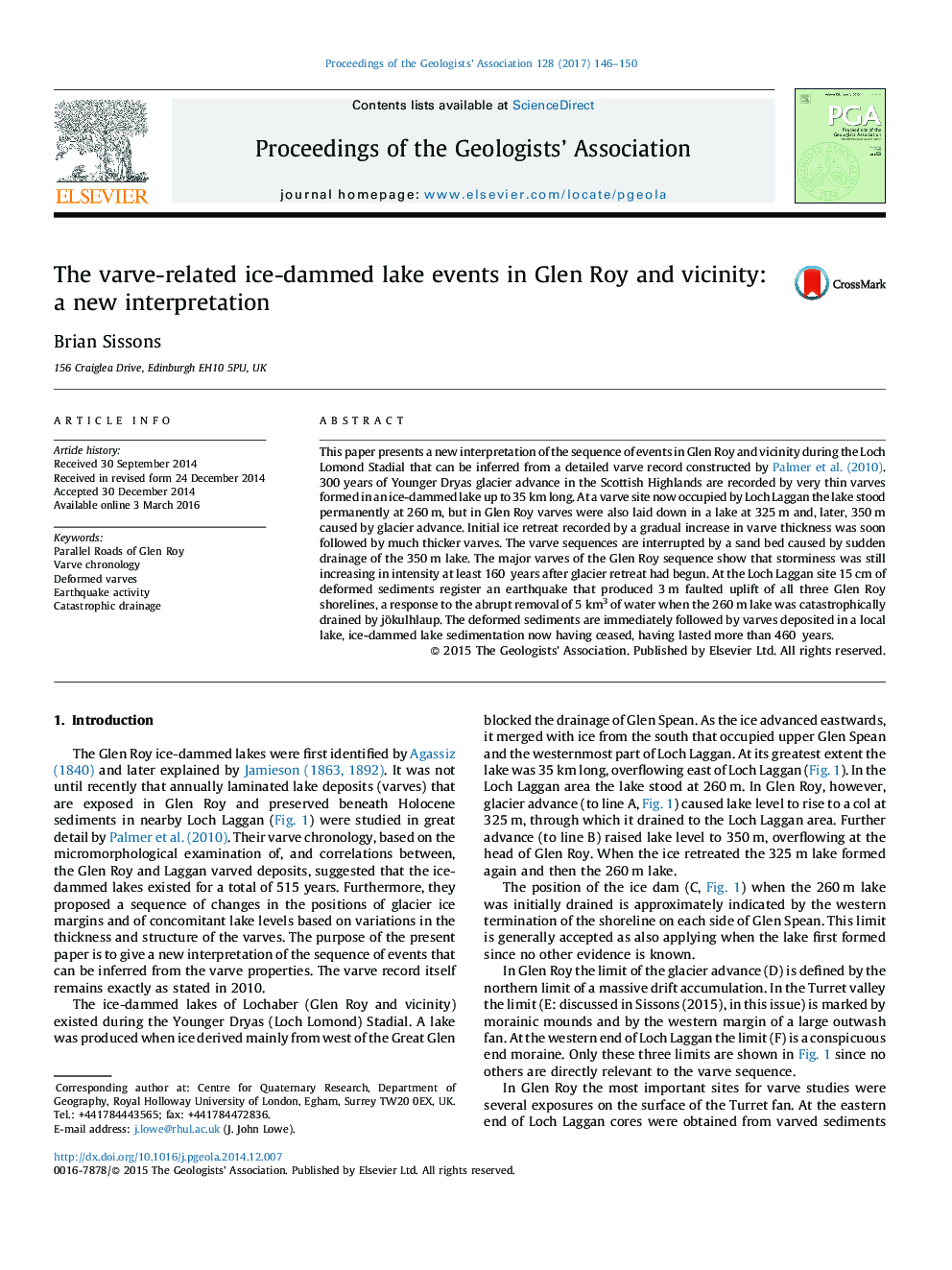| Article ID | Journal | Published Year | Pages | File Type |
|---|---|---|---|---|
| 5786424 | Proceedings of the Geologists' Association | 2017 | 5 Pages |
This paper presents a new interpretation of the sequence of events in Glen Roy and vicinity during the Loch Lomond Stadial that can be inferred from a detailed varve record constructed by Palmer et al. (2010). 300 years of Younger Dryas glacier advance in the Scottish Highlands are recorded by very thin varves formed in an ice-dammed lake up to 35Â km long. At a varve site now occupied by Loch Laggan the lake stood permanently at 260Â m, but in Glen Roy varves were also laid down in a lake at 325Â m and, later, 350Â m caused by glacier advance. Initial ice retreat recorded by a gradual increase in varve thickness was soon followed by much thicker varves. The varve sequences are interrupted by a sand bed caused by sudden drainage of the 350Â m lake. The major varves of the Glen Roy sequence show that storminess was still increasing in intensity at least 160 years after glacier retreat had begun. At the Loch Laggan site 15Â cm of deformed sediments register an earthquake that produced 3Â m faulted uplift of all three Glen Roy shorelines, a response to the abrupt removal of 5Â km3 of water when the 260Â m lake was catastrophically drained by jökulhlaup. The deformed sediments are immediately followed by varves deposited in a local lake, ice-dammed lake sedimentation now having ceased, having lasted more than 460 years.
